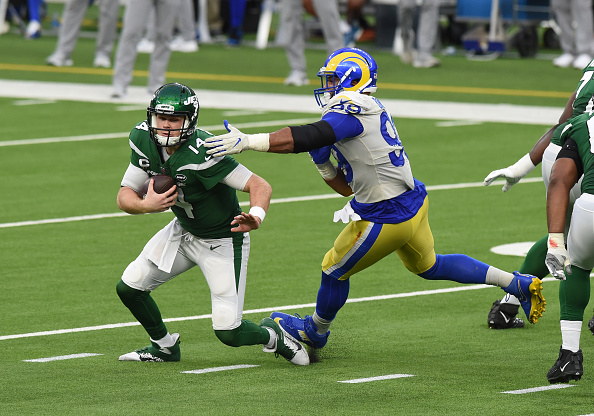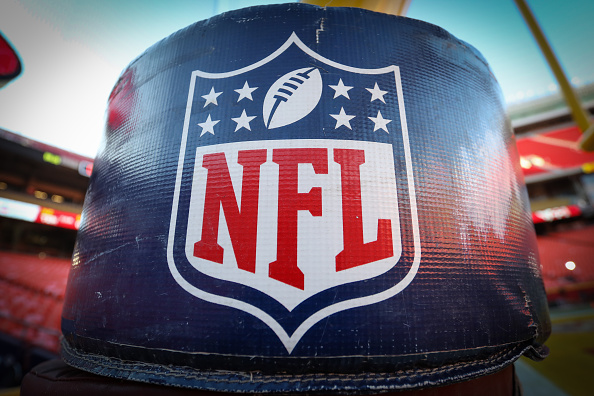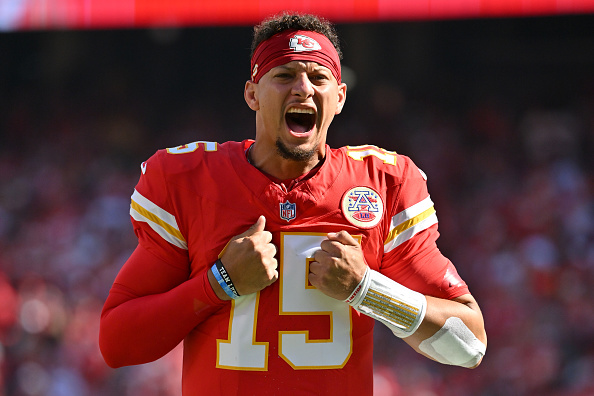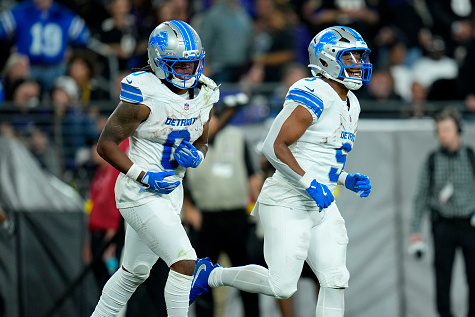At this point in the Defensive Player of the Year race, three names pop up: Aaron Donald, T.J. Watt, and Xavien Howard.
Donald and Watt have been here before. Donald won the award in both 2017 and 2018 while Watt was a runner-up in 2019. It is new territory for Howard, but his cornerback brethren Stephon Gilmore broke a run of pass rushers who had won the award in recent years.
It boils down to Donald and Watt. Howard had an excellent campaign with elite numbers and even better tape, but he should finish a close third. He led the NFL in interceptions, and he should be one of the easier All-Pro selections.
Donald should get the nod over Watt due to his consistent dominance. Yes, Watt ended the season with more sacks, but no one matched Donald’s pressure rate.
Pressure rate can be skewed, but in this case, the extraneous factors favor Watt to have a higher pressure rate. He didn’t.
The Case for Donald over Watt
The Steelers had three of the top seven players in total pressure. Stephon Tuitt and Cameron Heyward both eclipsed 60 pressures on the season, and they join Watt as All-Pro worthy players. Heyward has a chance to be the second interior defensive lineman (with Donald) while Tuitt was a Pro Bowl snub and should get looks on the second All-Pro team. They also had Bud Dupree for 11 games. No team in the NFL is as effective at getting pressure than the Steelers. This helps the rest of the group as they often are so productive that opposing offensive lines cannot double everyone. They must pick their poison, only able to double one player in many circumstances. If Pittsburgh blitzes, the talented defensive line gets a series of one-on-one matchups.
Watt, as an EDGE player, is theoretically going to have a higher pressure rate because he ultimately has to deal with fewer double teams. When he is doubled, it’s often with a running back, fullback, or tight end. Watt is routinely isolated on opposing tackles.
When Donald is doubled, it is almost exclusively with multiple interior offensive linemen. The average interior offensive lineman is more effective in pass protection than a running back, fullback, or tight end.
Donald must create pressure from the interior while facing one of the highest double team rates in football. The Rams have a solid DL, but it does not compare to Pittsburgh’s.
Counterpoint:
The Rams have the superior secondary. They have taken away deep passes like no other team in the NFL, meaning quarterbacks may have to stay in the pocket for longer times. Some of Donald’s pressure can come from these extended pocket sequences, but many quarterbacks know the Rams are great at stopping the big play, so some of those cheap pressures are offset with “the quarterback got the ball out before Donald could pressure them.”
As a side note, this is why Khalil Mack’s pressure numbers don’t match the eye test. He has one of the highest PFF pass-rushing grades, but he did not even reach 50 pressures. Many of his best reps came on quick passes, negating any potential pressure.
This can also apply to Watt and the Steelers. Some quarterbacks can intentionally speed up their decision-making to keep from getting pressured. This works both ways. Across the league, quarterbacks like Ryan Fitzpatrick and even Ben Roethlisberger could overcompensate for an unpredictable offensive line by firing passes quickly. If a play takes longer to develop, pass rushers are more likely to get pressure on the quarterback even if they do not win the initial rep at the point of attack.
Verdict:
As a whole, Donald presents yet another dominant campaign. Watt is a valiant No. 2, and Howard is as strong of a third candidate as anyone in recent memory.
Check us out on our socials:
Twitter: @PTSTNews and @TalkPrimeTime
Facebook Page: Prime Time Sports Talk
Join our Facebook Group: Prime Time Sports Talk
Instagram: @ptsportstalk
Follow Ryan Potts on Twitter @MrSplashMan19
Main Image Credit: Embed from Getty Images








One Response